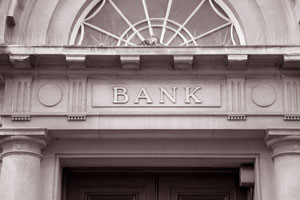Why America's Dual Banking System Matters

This post is part of a series titled “Supervising Our Nation’s Financial Institutions.” The series, written by Julie Stackhouse, executive vice president and officer-in-charge of supervision at the St. Louis Federal Reserve, is expected to appear at least once each month throughout 2017.
Bankers and regulators sometimes refer to the “dual banking system”—a system whereby banks can charter under federal or state laws. Why does this system of choice exist, and what benefit does it provide in today’s economy?
Origins of a Dual Banking System
The U.S. dual banking system has a long history. In our country’s early years, those seeking to issue and circulate bank notes required a bank charter, and most of those charters were issued at a state level.
The bank notes subsequently issued were unique to the institution, were not insured and tended to exchange at a discount when confidence in the bank was lacking. As time passed, the public realized that banks might be unable to redeem their notes at par, an issue that came to the forefront during the banking panic of 1837.
Establishing a National Currency
By the time of the Civil War, it became apparent that a national currency was needed to finance the war. Congress addressed this need through passage of the National Bank Act of 1863, resulting in the issuance of a common currency through national banks.
Later, an amendment was added to tax state bank notes. Faced with this tax, the number of state banks decreased dramatically until innovation ensued and state banks began offering a new instrument: demand deposits, such as checking accounts. This new deposit structure led to a resurgence in state charters.
Today’s Strong Dual Banking System
Today, the state-charted banking system is strong, and the dual banking system remains intact. Of the nation’s roughly 5,000 banks, more than 80 percent of them are state chartered, up from 69 percent in 1980, as seen in the table below.
| Dual Banking System Alive and Well | |||
|---|---|---|---|
| Year | National Banks | State-Chartered Banks | State Banks as a Percent of Total (%) |
| 1980 | 4,423 | 9,999 | 69.0 |
| 1990 | 3,967 | 8,368 | 67.8 |
| 2000 | 2,229 | 6,086 | 73.2 |
| 2010 | 1,382 | 5,146 | 78.8 |
| 2017 | 896 | 4,152 | 82.3 |
| NOTE: All data are year-end except 2017, which is mid-year. | |||
| SOURCE: Federal Reserve, National Information Center | |||
| Federal Reserve Bank of St. Louis | |||
While national banks tend to be larger and account for a larger share of industry assets, state-chartered banks are usually smaller and frequently dedicated to meeting the banking needs of a single community or narrow geographic area. States take pride in their state-chartered banks, and over time, state banks have taken the lead in safe and sound product innovations, including variable-rate mortgages and home equity loans.
Banking Regulators Benefit, Too
The dual banking system has arguably raised the performance of banking regulators as well, given the ability of healthy banks to change charters. Regulators have an added incentive to control costs so that supervisory fees do not lead to charter switching.
Some argue that the dual banking system would not exist if today’s mature financial system were in place 150 years ago. While no one can be certain, the loyalty of consumers and businesses to their local community bank suggest that the dual system will survive for decades to come.
Follow the Series
- Why Are Banks Regulated?
- Did the Dodd-Frank Act Make the Financial System Safer?
- Bank Supervision and the Central Bank: An Integrated Mission
- Why Are There So Many Bank Regulators?
- Why Didn’t Bank Regulators Prevent the Financial Crisis?
- Who Funds the Cost of Bank Supervision?
- Why Does the Fed Supervise Small Banks?
- Regulation and Regulatory Burden
Additional Resources
- Bank Supervision
- Community Banking Resources
- On the Economy: Keeping a Watchful Eye
Citation
Julie L Stackhouse, ldquoWhy America's Dual Banking System Matters,rdquo St. Louis Fed On the Economy, Sept. 18, 2017.
This blog offers commentary, analysis and data from our economists and experts. Views expressed are not necessarily those of the St. Louis Fed or Federal Reserve System.
Email Us
All other blog-related questions

